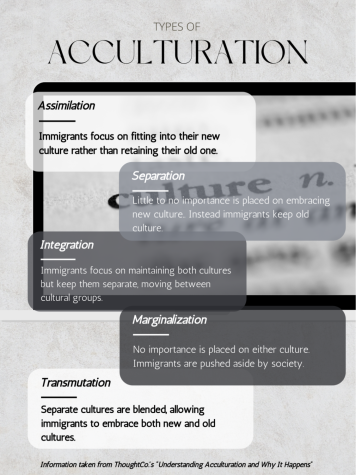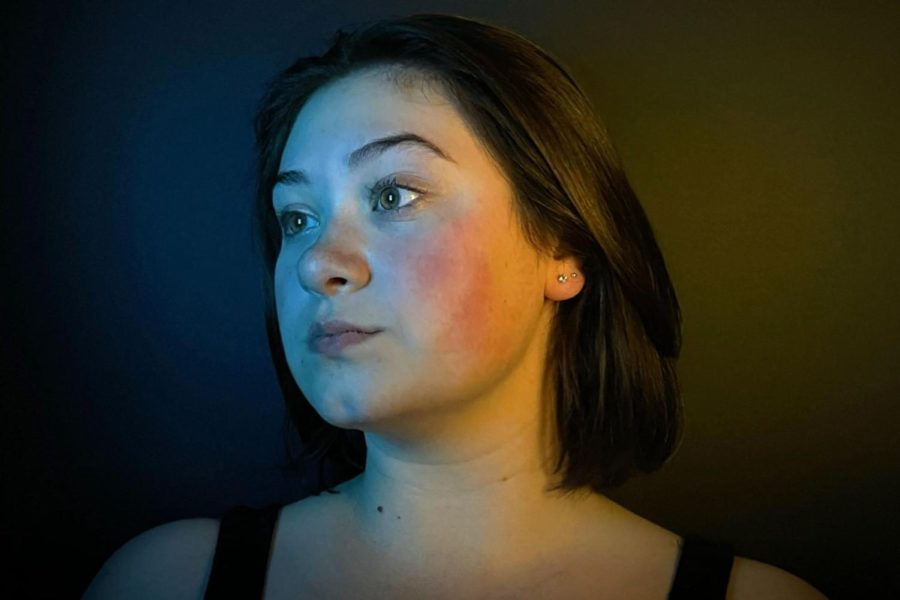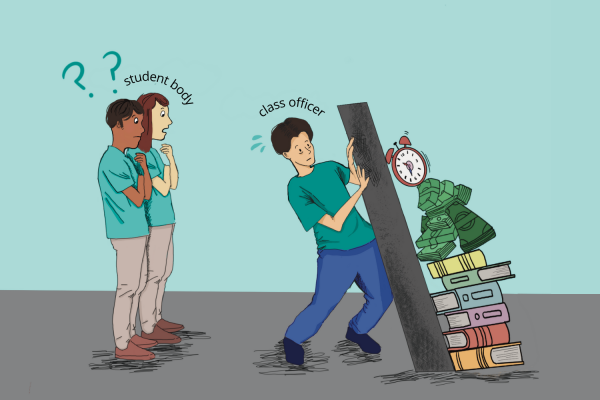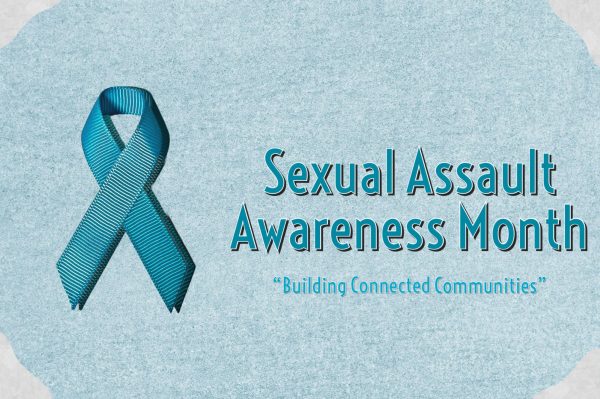Lost to assimilation
Junior Madi Michajliczenko poses with yellow and blue light shining on her, representative of her family’s history in Ukraine. When her family immigrated, they decided to assimilate, causing Michajliczenko to know little about her past culture in Ukraine.
April 21, 2022
M-i-c-h-a-j-l-i-c-z-e-n-k-o. I spent time learning to print each letter and its order before I knew what my last name meant. It took me longer than others. After all, a typical last name doesn’t have 14 letters. When I was younger, I was confused about why my name was different. Why wasn’t anyone else’s?
I first questioned my dad about my name in the fifth grade. My teacher had assigned a family tree project to students to explore their family’s heritage. When I asked, he explained how my great-grandpa came from Ukraine with his family to start a life in America.
As a curious young fifth-grader, I wanted to know more. But I quickly learned that my family was almost as lost as I was. We have little information about our past in Ukraine further back than my great-grandpa. The name, Michajliczenko, soon became an alien entity, far from what I thought I knew of it. It was a name filled with a long past I knew nothing about.
More recently, with the ongoing Russian invasion of Ukraine, people have asked for my opinion on the matter or if I have family there I am worried about. But the truth is, my family cut their ties with Ukraine a long time ago.
My grandpa first came to America with his family in 1952. During this time, immigrants focused on embracing American culture to its fullest to avoid being seen as outsiders. Completely assimilating. My great-grandfather was no different. While he still had family in Ukraine, whom he visited from time to time, my great-grandpa took action to become an American: changing his name, converting from Judaism to Christianity and not teaching his children the Ukrainian language.
My family chose to assimilate — one of the five methods of acculturation. In this method, immigrants enter a new country and choose to ultimately adopt the new culture without focusing on retaining the past culture. Assimilation requires that new immigrants have the same culture as others, with little to no differentiation.
American society has placed a large importance on the assimilation of immigrants. However, I want to tell you that this should not continue to be our goal — as a person whose family has experienced the effects of assimilation firsthand. Immigrants should not aim to become identical to others in society.

Instead, we should aim for a different method of acculturation: transmutation. Transmutation occurs when immigrants adopt a new culture and still hold their old one. Creating a blend of old and new cultures allows immigrants to retain their important traditions while also keeping a set of cultural norms in society. Therefore, other immigrants will not feel the need to Anglicize the spelling of their names or feel pressure to convert — all things that my family went through.
With the societal push to embrace cultural diversity, many have put effort into learning more about their heritage, even going as far as taking AncestryDNA or 23andMe tests to discover their family’s background. But, especially at this point, we must not return to believing that complete assimilation is our goal.
We need to advocate for balance. Encourage immigrants to combine our new and old cultures to create something new and beautiful. In my case, this means identifying as an American but also realizing and appreciating my Ukrainian ancestry. This is known as a transcultural identity. It is created by combining facets of each culture into a singular, new one.
When individuals create a new culture by combining previous ones, they will feel less strained between separate cultures. There will no longer be competition between one culture and another because it has been tailored to each person’s needs. As a result, people will not feel the need to completely embrace only one culture and set aside the other for fear that they will be looked down upon.
My family may not have been lucky enough to create this new identity, but I hope that our story is a testament to others in similar situations. We are allowed to identify with multiple cultures at once. In my case, part American but still part Ukrainian.
Looking forward, we must change our long-held views regarding assimilation. It is no longer, and I dare say never has been, beneficial to creating a well-rounded society. Unlike others who have fallen prey to this ideology, I hope to be lucky enough to continue learning about my family’s past and lost culture. Perhaps even practice the balance that I preach and reverse the effects of a culture lost to assimilation.
This story was originally published on Pathfinder on April 19, 2022.



























![IN THE SPOTLIGHT: Junior Zalie Mann performs “I Love to Cry at Weddings,” an ensemble piece from the fall musical Sweet Charity, to prospective students during the Fine Arts Showcase on Wednesday, Nov. 8. The showcase is a compilation of performances and demonstrations from each fine arts strand offered at McCallum. This show is put on so that prospective students can see if they are interested in joining an academy or major.
Sweet Charity originally ran the weekends of Sept. 28 and Oct. 8, but made a comeback for the Fine Arts Showcase.
“[Being at the front in the spotlight] is my favorite part of the whole dance, so I was super happy to be on stage performing and smiling at the audience,” Mann said.
Mann performed in both the musical theatre performance and dance excerpt “Ethereal,” a contemporary piece choreographed by the new dance director Terrance Carson, in the showcase. With also being a dance ambassador, Mann got to talk about what MAC dance is, her experience and answer any questions the aspiring arts majors and their parents may have.
Caption by Maya Tackett.](https://bestofsno.com/wp-content/uploads/2024/02/53321803427_47cd17fe70_o-1-1200x800.jpg)
![SPREADING THE JOY: Sophomore Chim Becker poses with sophomores Cozbi Sims and Lou Davidson while manning a table at the Hispanic Heritage treat day during lunch of Sept 28. Becker is a part of the students of color alliance, who put together the activity to raise money for their club.
“It [the stand] was really fun because McCallum has a lot of latino kids,” Becker said. “And I think it was nice that I could share the stuff that I usually just have at home with people who have never tried it before.”
Becker recognizes the importance of celebrating Hispanic heritage at Mac.
“I think its important to celebrate,” Becker said. “Because our culture is awesome and super cool, and everybody should be able to learn about other cultures of the world.”
Caption by JoJo Barnard.](https://bestofsno.com/wp-content/uploads/2024/01/53221601352_4127a81c41_o-1200x675.jpg)














